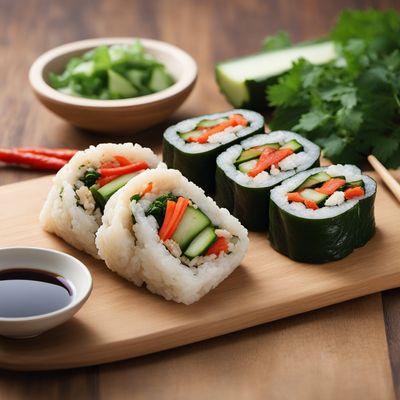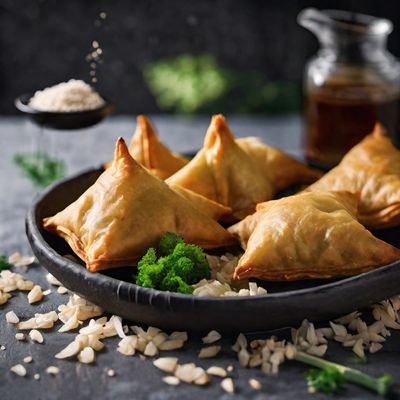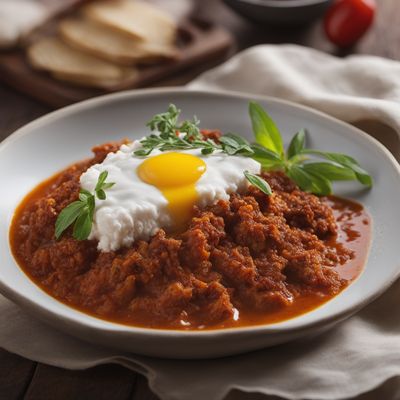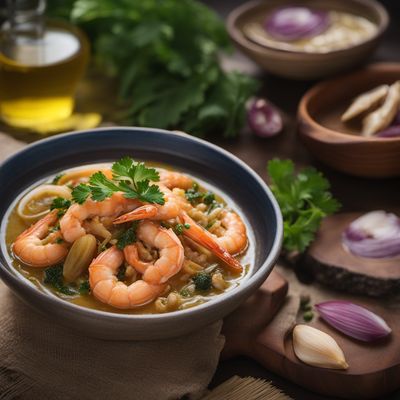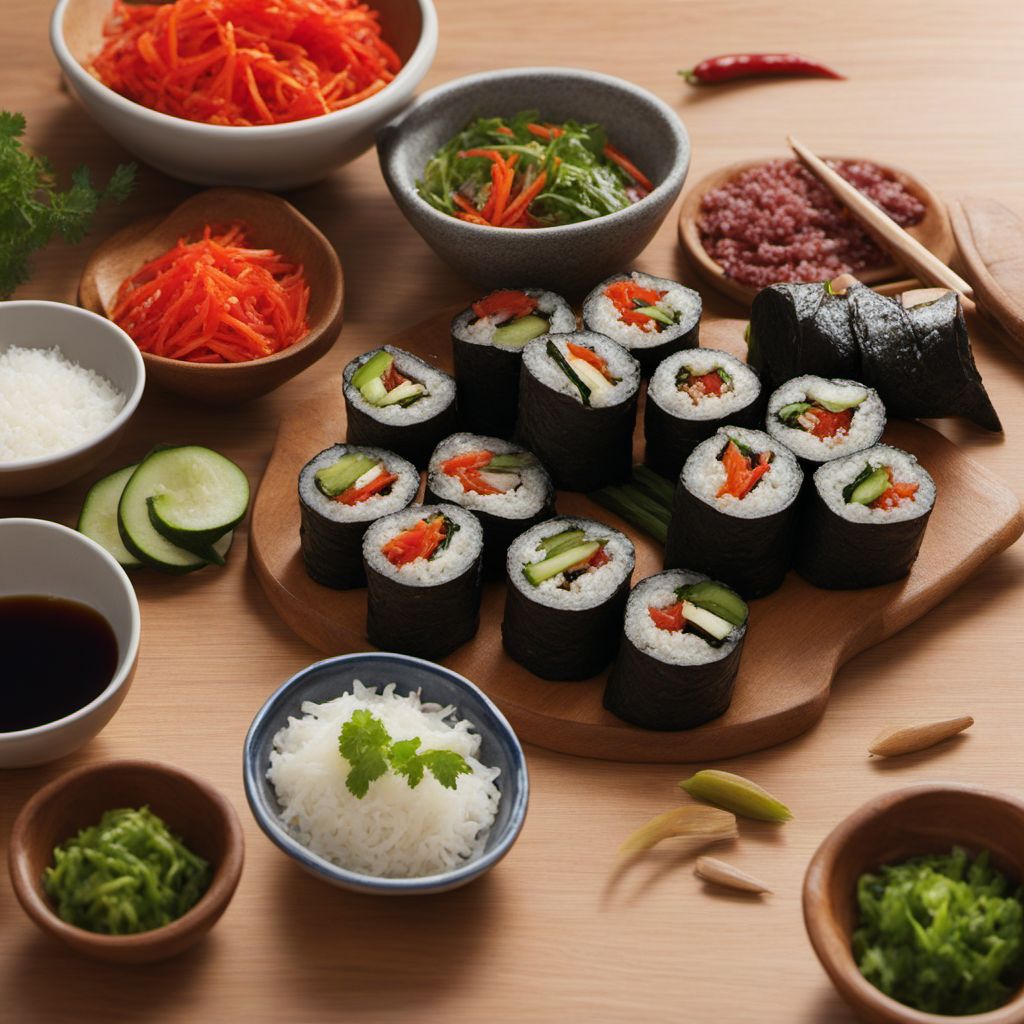
Recipe
Asturian-style Mayak Gimbap
Asturian Delight: A Twist on Mayak Gimbap
4.5 out of 5
Asturian-style Mayak Gimbap is a fusion dish that combines the flavors of traditional Korean Mayak Gimbap with the unique ingredients and techniques of Asturian cuisine. This recipe offers a delightful twist on the original dish, bringing together the best of both culinary worlds.
Metadata
Preparation time
20 minutes
Cooking time
N/A
Total time
20 minutes
Yields
4 servings
Preparation difficulty
Easy
Suitable for
Pescatarian, Gluten-free, Dairy-free, Nut-free, Low-fat
Allergens
Dairy (cheese), Gluten (if using regular soy sauce for dipping)
Not suitable for
Vegan, Vegetarian, Paleo, Keto, High-fat
Ingredients
Asturian-style Mayak Gimbap differs from the original Korean Mayak Gimbap in several ways. Firstly, it incorporates Asturian ingredients such as chorizo, local cheese, and roasted peppers, which add a distinct flavor profile to the dish. Additionally, the seasoning of the rice is adapted to include traditional Asturian spices, enhancing the overall taste. The fusion of these ingredients and flavors creates a unique culinary experience that pays homage to both Korean and Asturian cuisines. We alse have the original recipe for Mayak gimbap, so you can check it out.
-
4 cups (800g) cooked short-grain rice 4 cups (800g) cooked short-grain rice
-
4 sheets of roasted seaweed 4 sheets of roasted seaweed
-
4 Asturian chorizo sausages, thinly sliced 4 Asturian chorizo sausages, thinly sliced
-
1 cup (100g) local cheese, cut into thin strips 1 cup (100g) local cheese, cut into thin strips
-
1 cup (150g) roasted peppers, sliced 1 cup (150g) roasted peppers, sliced
-
1 cup (150g) pickled vegetables (such as carrots and radishes) 1 cup (150g) pickled vegetables (such as carrots and radishes)
-
2 tablespoons Asturian spice blend (pimentón, garlic powder, and oregano) 2 tablespoons Asturian spice blend (pimentón, garlic powder, and oregano)
-
Salt, to taste Salt, to taste
Nutrition
- Calories (kcal / KJ): 350 kcal / 1465 KJ
- Fat (total, saturated): 12g, 5g
- Carbohydrates (total, sugars): 45g, 2g
- Protein: 15g
- Fiber: 3g
- Salt: 1.5g
Preparation
-
1.In a large bowl, combine the cooked rice with the Asturian spice blend and salt. Mix well to ensure the rice is evenly seasoned.
-
2.Lay a sheet of roasted seaweed on a bamboo sushi mat or a clean surface.
-
3.Spread a thin layer of seasoned rice evenly over the seaweed, leaving a small border at the top.
-
4.Arrange a few slices of chorizo, cheese strips, roasted peppers, and pickled vegetables in a line across the center of the rice.
-
5.Using the bamboo mat or your hands, tightly roll the seaweed and rice over the filling, applying gentle pressure to create a compact roll.
-
6.Repeat the process with the remaining ingredients.
-
7.Once all the rolls are prepared, use a sharp knife to slice them into bite-sized pieces.
-
8.Serve the Asturian-style Mayak Gimbap as a delightful appetizer or a light meal.
Treat your ingredients with care...
- Asturian chorizo — Ensure the chorizo is thinly sliced to allow for easy rolling and even distribution of flavors.
- Local cheese — Choose a semi-hard cheese that can be easily cut into thin strips. Opt for a cheese with a mild flavor that complements the other ingredients.
- Roasted peppers — If you can't find pre-roasted peppers, you can roast them yourself by placing whole peppers under a broiler until the skin is charred. Let them cool, then remove the skin and slice.
- Pickled vegetables — You can make your own pickled vegetables by thinly slicing carrots and radishes, then soaking them in a mixture of vinegar, sugar, and salt for a few hours.
Tips & Tricks
- To prevent the seaweed from becoming soggy, assemble the rolls just before serving.
- Serve the Asturian-style Mayak Gimbap with a side of Asturian cider for an authentic pairing.
- Feel free to customize the fillings by adding other Asturian ingredients such as sautéed mushrooms or Asturian white beans.
- If you prefer a spicier version, add a dash of Asturian hot sauce to the filling.
- For a vegetarian option, substitute the chorizo with grilled tofu or marinated tempeh.
Serving advice
Serve the Asturian-style Mayak Gimbap as an appetizer at a gathering or as a light meal accompanied by a fresh salad. Arrange the bite-sized rolls on a platter and garnish with a sprinkle of Asturian spice blend for an extra touch of flavor.
Presentation advice
Arrange the Asturian-style Mayak Gimbap rolls in a neat and visually appealing pattern on a serving platter. Consider using a mix of colorful pickled vegetables as a garnish to add vibrancy to the presentation. Serve with small dipping bowls of soy sauce or Asturian hot sauce for guests to enjoy.
More recipes...
For Mayak gimbap
For Korean cuisine » Browse all
More Korean cuisine dishes » Browse all
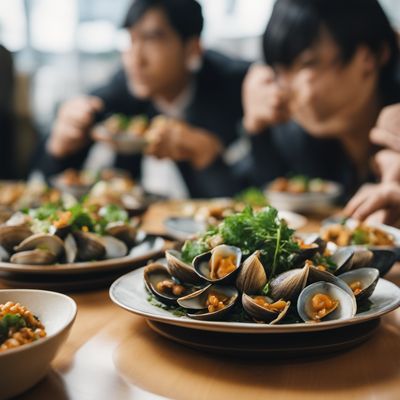
Nampo Petrol Clams
Nampo Petrol Clams is a Korean dish that is made with fresh clams and a variety of other ingredients. It is a flavorful and healthy dish that is...
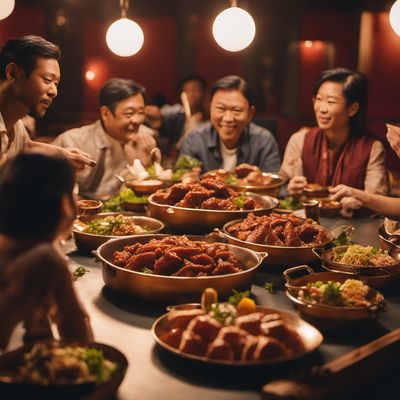
Galmaegisal
Galmaegisal (pork dish)
Galmaegisal is a Korean dish made with grilled pork skirt steak.
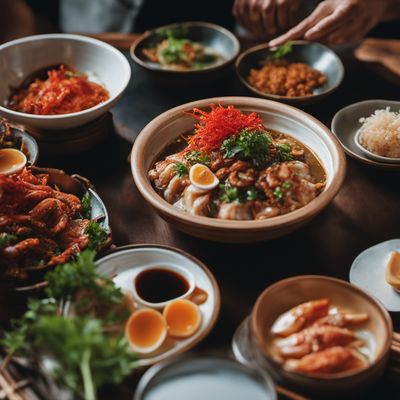
Gejang
Gejang is a traditional Korean dish that is made with raw crab marinated in soy sauce and other seasonings. It is typically served as an appetizer.
